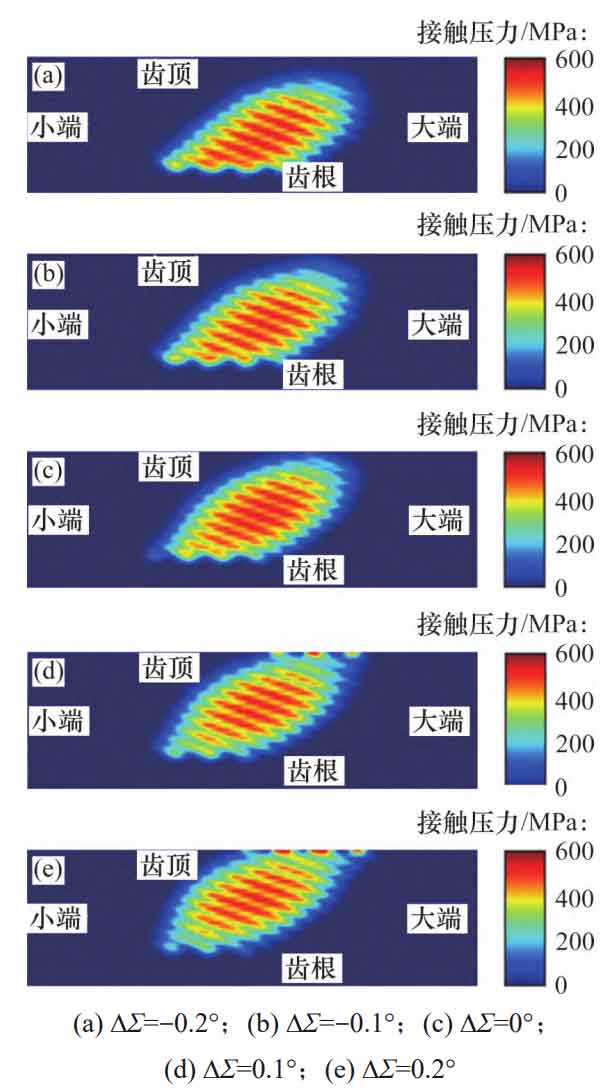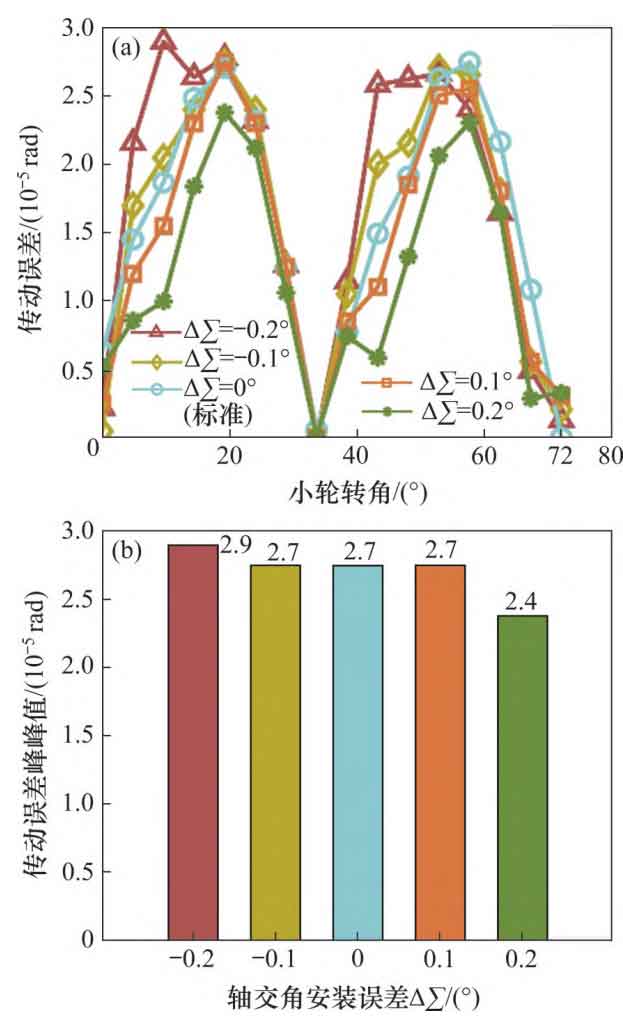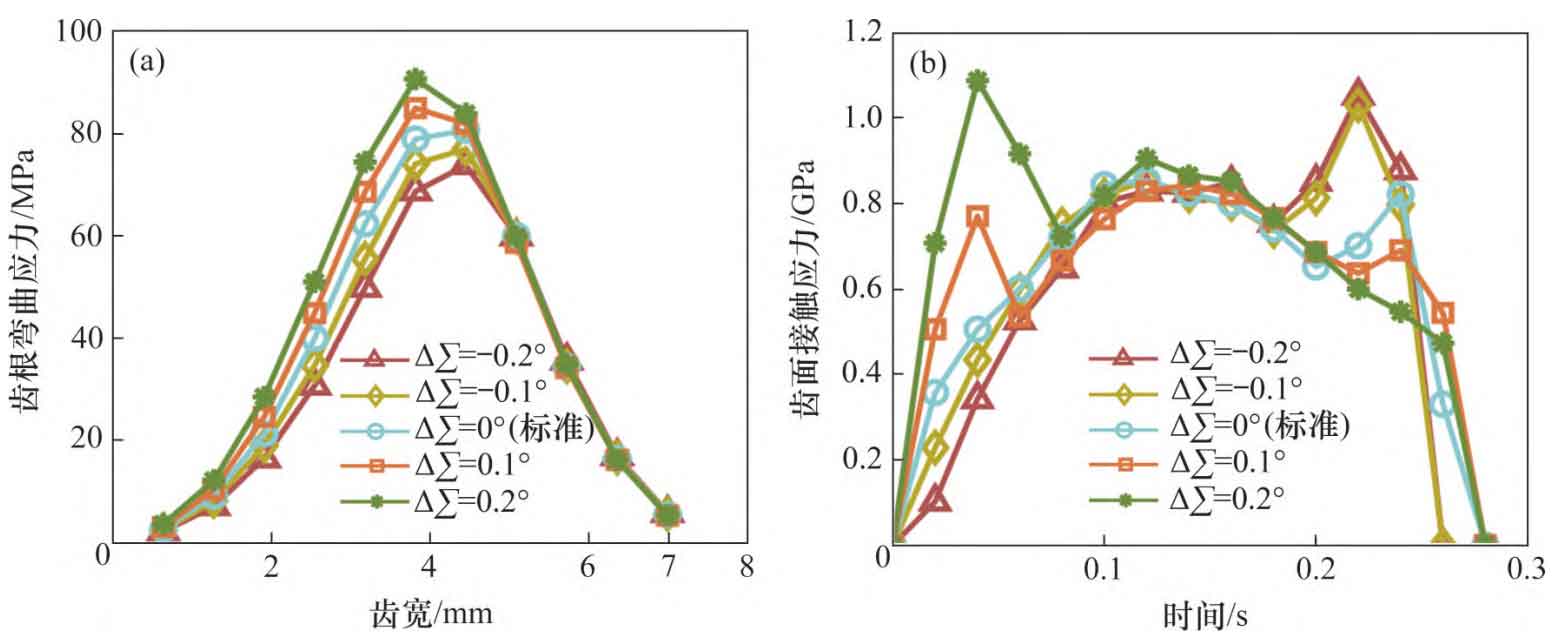The influence of the installation error of the shaft intersection angle on the engagement mark of the spiral bevel gear pair is shown in Figure 1. It can be seen from Figure 1 that as the installation error of the shaft intersection angle increases from − 0.2 ° to 0.2 °, the engagement mark moves from the root to the top of the tooth, the contact area at the root edge decreases, the contact area at the top edge increases, and the change of the engagement mark in the tooth length direction is not obvious.

Figure 2 shows the influence of installation error of shaft intersection angle on transmission error. It can be seen from Figure 2 that the installation error of the current shaft intersection angle ΔΣ When it is far greater than 0 °, the smoothness of the time-varying curve of transmission error decreases, and when the shaft intersection angle is installed ΔΣ When it is − 0.2 °, the time varying value and peak to peak value of transmission error are maximum, which is 2.9 × 10−5 rad; When ΔΣ When it is 0.2 °, the time-varying value and peak to peak value of transmission error are the minimum, 2.4 × 10−5 rad; along with ΔΣ When the transmission error increases from − 0.1 ° to 0.1 °, the peak to peak value of transmission error does not change significantly.

(b) Peak to peak transmission error
The influence of the installation error of the shaft intersection angle on the tooth root bending stress of the spiral bevel gear is shown in Figure 3 (a). It can be seen from Figure 3 (a) that when ΔΣ When − 0.2 ° increases to 0.2 °, the tooth root bending stress gradually increases, and the position where the maximum tooth root bending stress occurs moves to the small end. The influence of the installation error of the shaft intersection angle on the tooth surface contact stress of the spiral bevel gear pair is shown in Figure 3 (b). As can be seen from Figure 3 (b): ΔΣ When − 0.2 ° is increased to 0.2 °, the tooth root edge contact area decreases, and the tooth tip edge contact area appears and increases; When ΔΣ When it is negative, the change of tooth surface contact stress is not obvious, and the tooth surface contact stress is ΔΣ The maximum value is reached at 0.2 °.

(a) Tooth root bending stress; (b) Tooth contact stress
